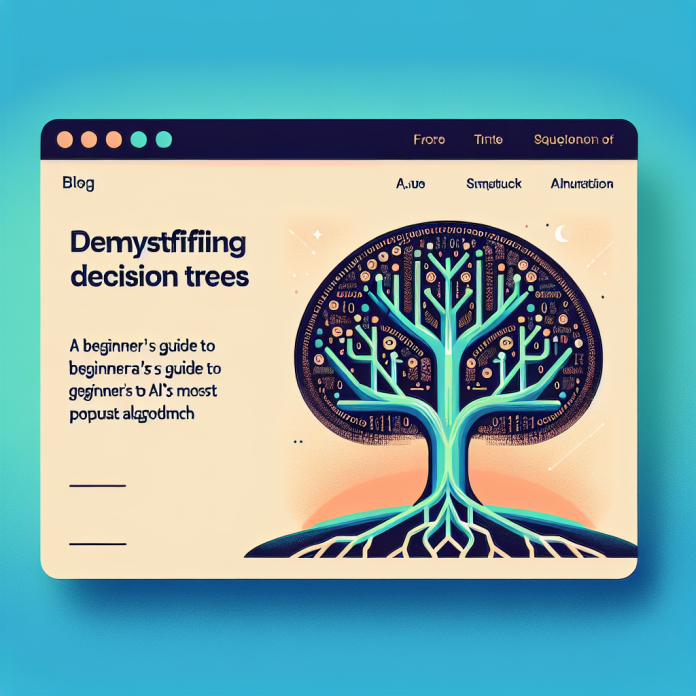Introduction:
Imagine you are at a crossroads, faced with a decision to make. How do you go about making that decision? Do you weigh the pros and cons, do some research, or simply go with your gut feeling? Just like us, artificial intelligence (AI) also faces decisions in its own way. One popular method used in AI for decision-making is through the use of decision trees. In this article, we will explore what decision trees are, how they work, and why they are important in the world of AI.
What are Decision Trees?
Decision trees are a popular tool in the world of artificial intelligence and machine learning. They are a visual representation of decision-making processes that resemble a tree-like structure, with nodes representing decisions, branches representing the possible outcomes of those decisions, and leaves representing the final decisions or outcomes.
How do Decision Trees work?
Think of decision trees as a series of if-then statements. At each node of the tree, a decision is made based on the input data, and the algorithm follows the branches to the next node until a final decision or outcome is reached at the leaf nodes.
Let’s break it down with a real-world example: Imagine you are trying to decide whether to go for a run. The decision tree might look something like this:
– If the weather is sunny -> go for a run
– If the weather is rainy -> stay indoors
In this simple example, the weather is the input data, and the decision tree helps you make a decision based on that input.
Why are Decision Trees important in AI?
Decision trees are important in AI for several reasons. Firstly, they are easy to understand and interpret, making them popular among data scientists and developers. They can handle both numerical and categorical data, making them versatile for a wide range of applications. Additionally, decision trees can handle missing values in the data, making them robust and reliable for real-world data sets.
Real-life Applications of Decision Trees:
Decision trees are used in a wide range of real-world applications, from healthcare to finance to marketing. Let’s take a look at some examples:
– Healthcare: Decision trees are used in medical diagnosis and treatment planning. For example, a decision tree can help doctors diagnose a patient’s condition based on their symptoms and medical history.
– Finance: Decision trees are used in credit scoring and risk assessment. Banks and financial institutions use decision trees to evaluate the creditworthiness of loan applicants and determine the likelihood of default.
– Marketing: Decision trees are used in customer segmentation and targeted marketing. Companies use decision trees to identify customer segments based on demographics, behavior, and preferences, allowing them to tailor their marketing strategies accordingly.
Challenges and Limitations of Decision Trees:
While decision trees are powerful tools in AI, they also have their limitations. One of the main challenges of decision trees is overfitting, which occurs when the model is too complex and captures noise in the data instead of the underlying patterns. To overcome this, techniques like pruning and ensemble methods are used to simplify the decision tree and improve its generalization ability.
Conclusion:
Decision trees are a valuable tool in the world of artificial intelligence, helping to make complex decisions based on input data. They are easy to understand, versatile, and robust, making them popular in a wide range of applications. While decision trees have their limitations, they can be overcome with proper techniques and strategies. As AI continues to advance, decision trees will play a crucial role in shaping the future of intelligent decision-making.

